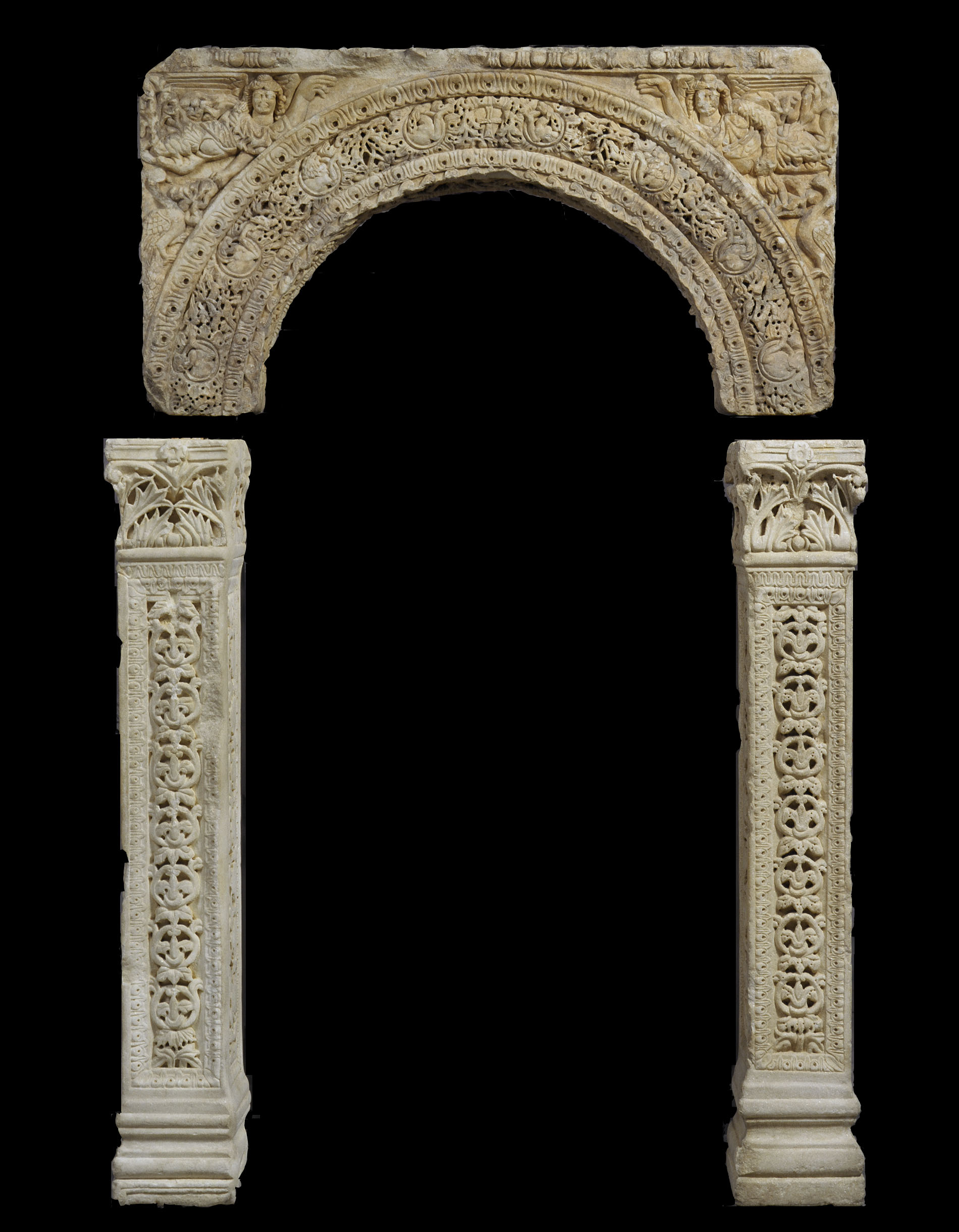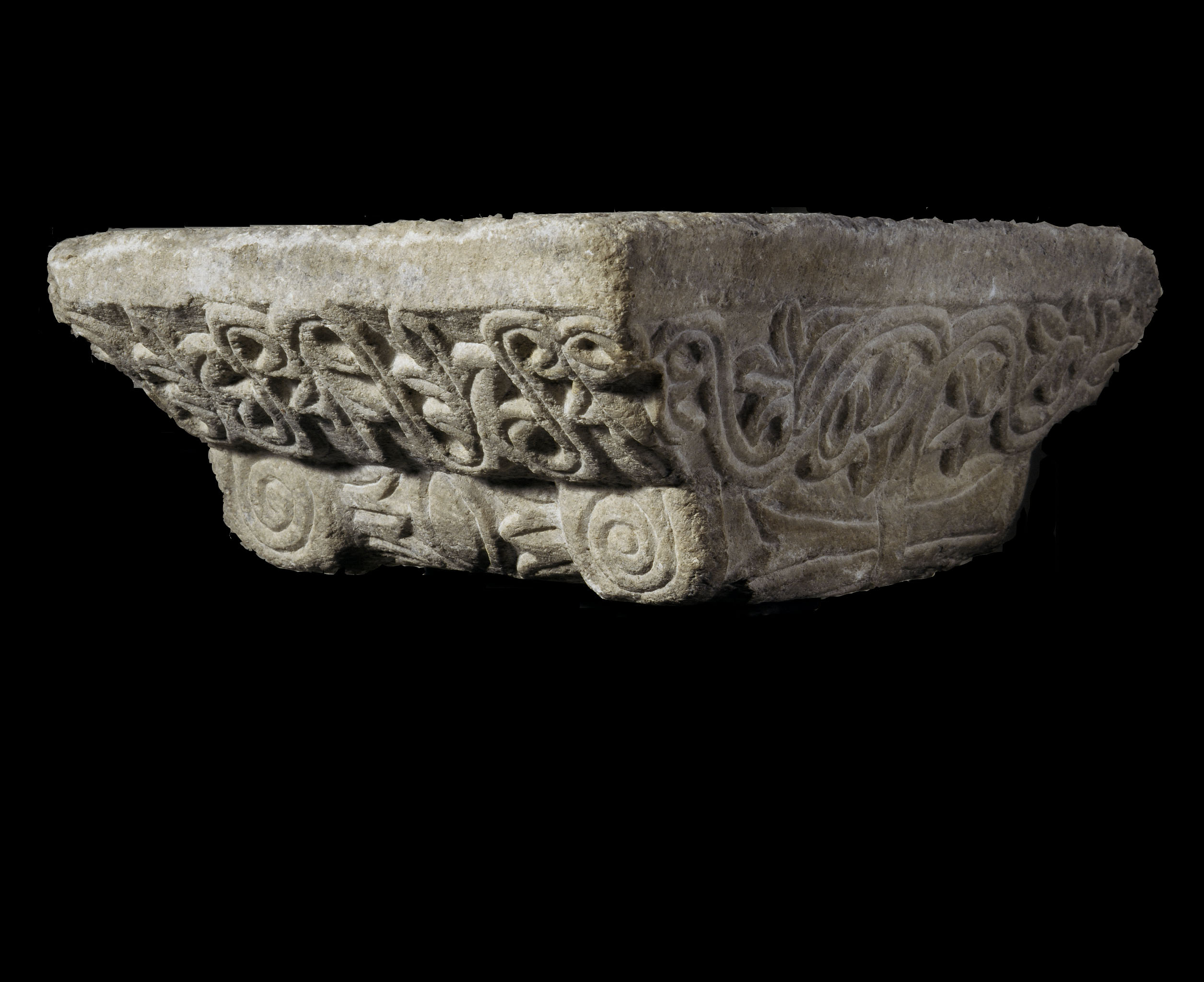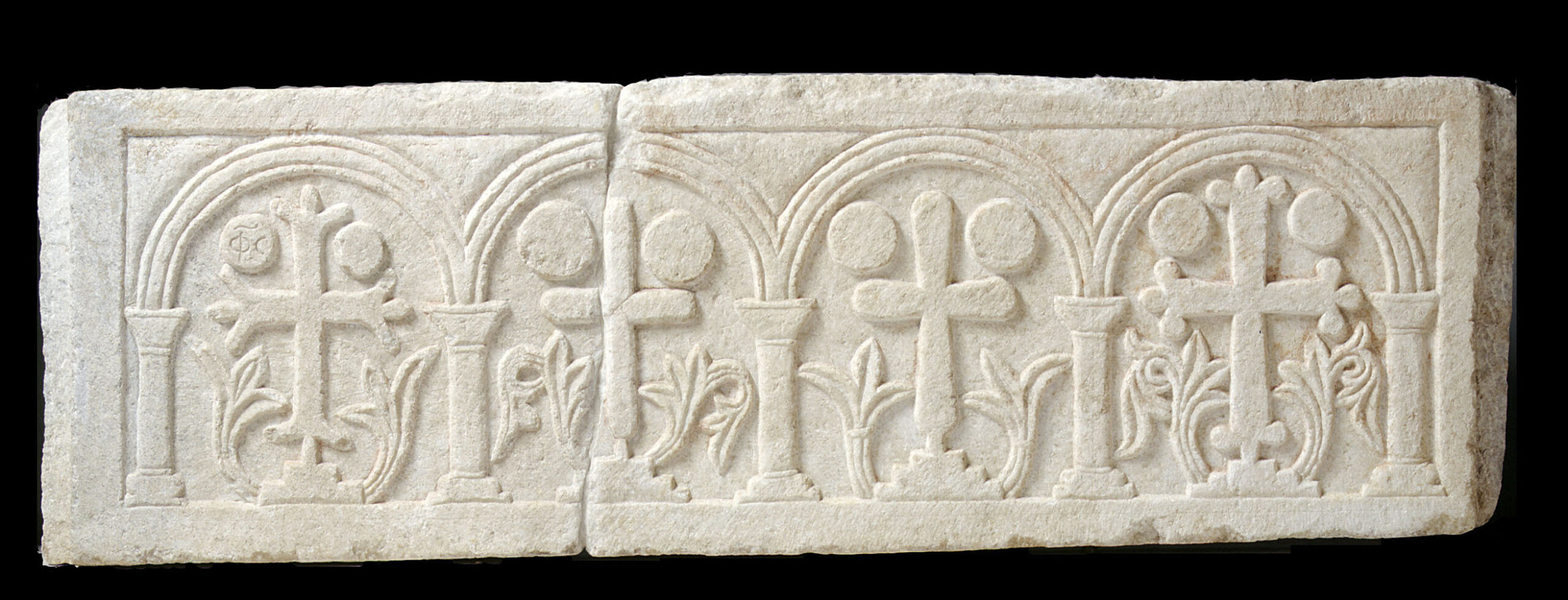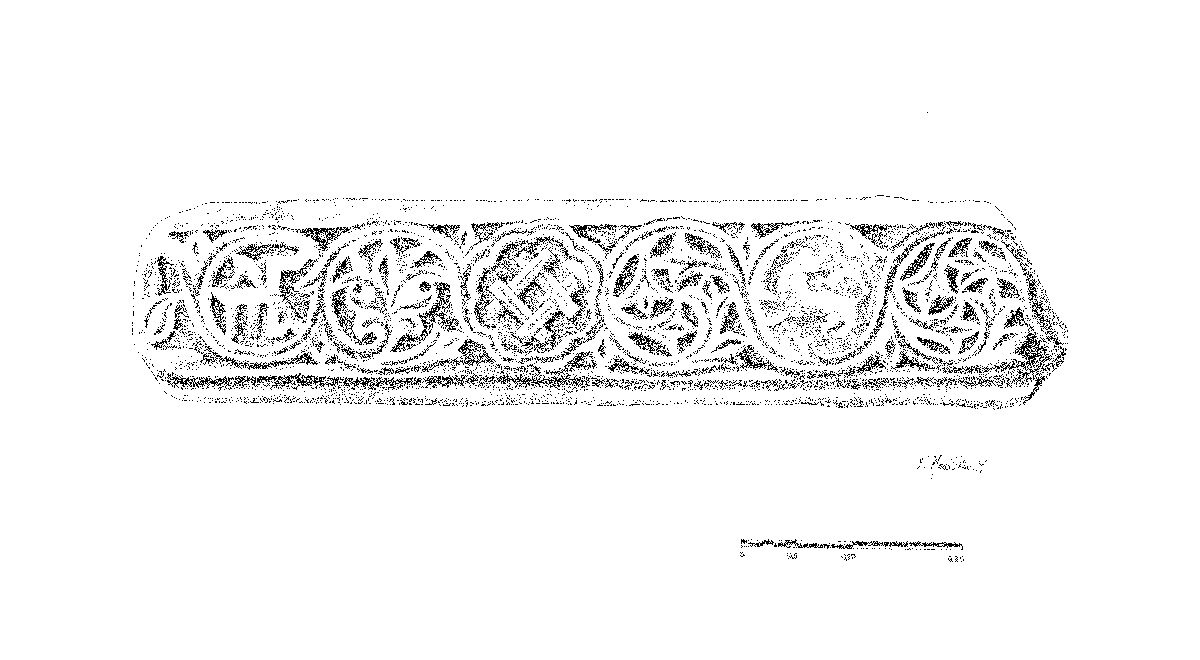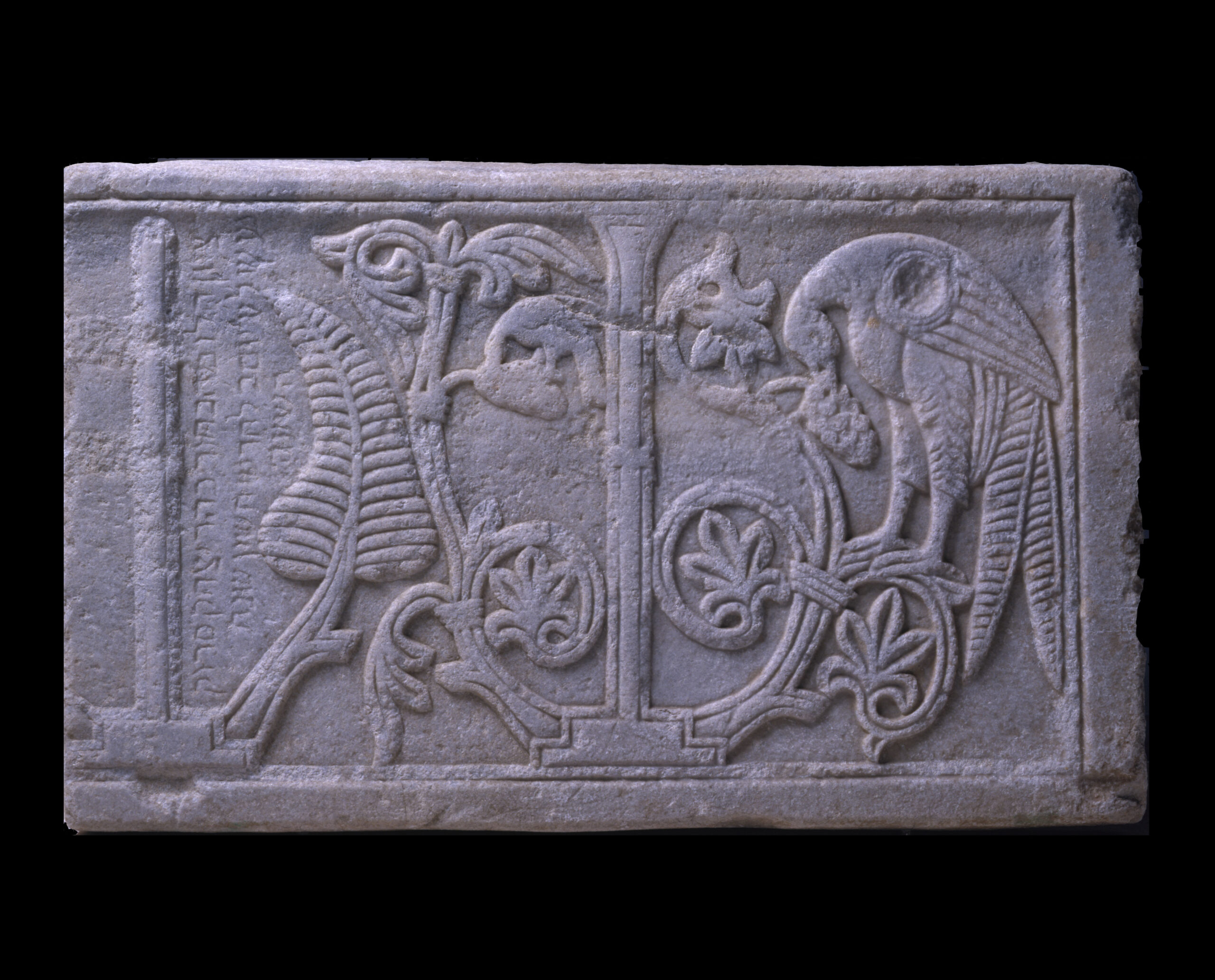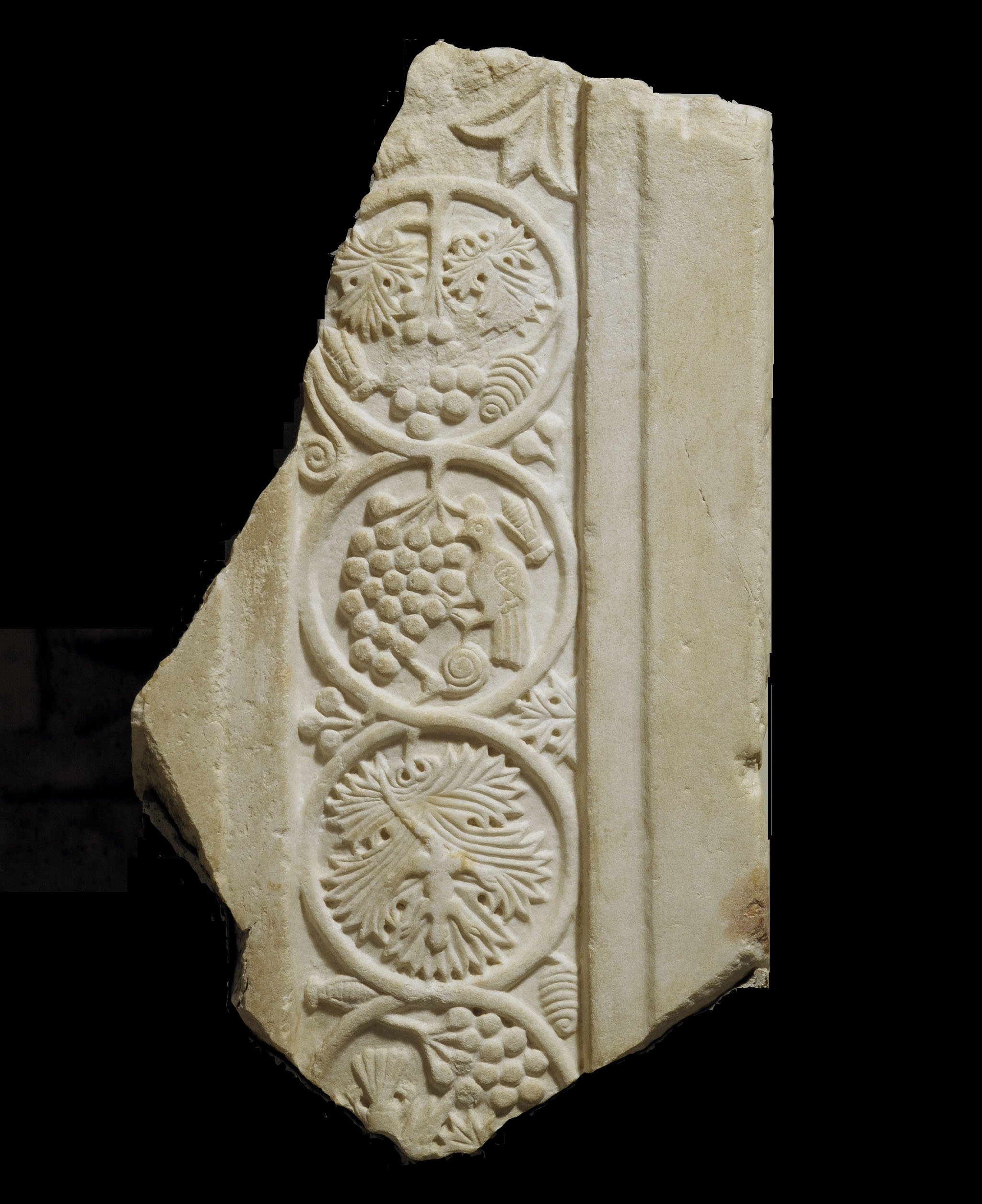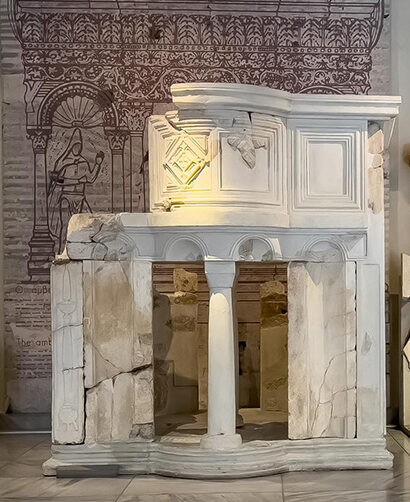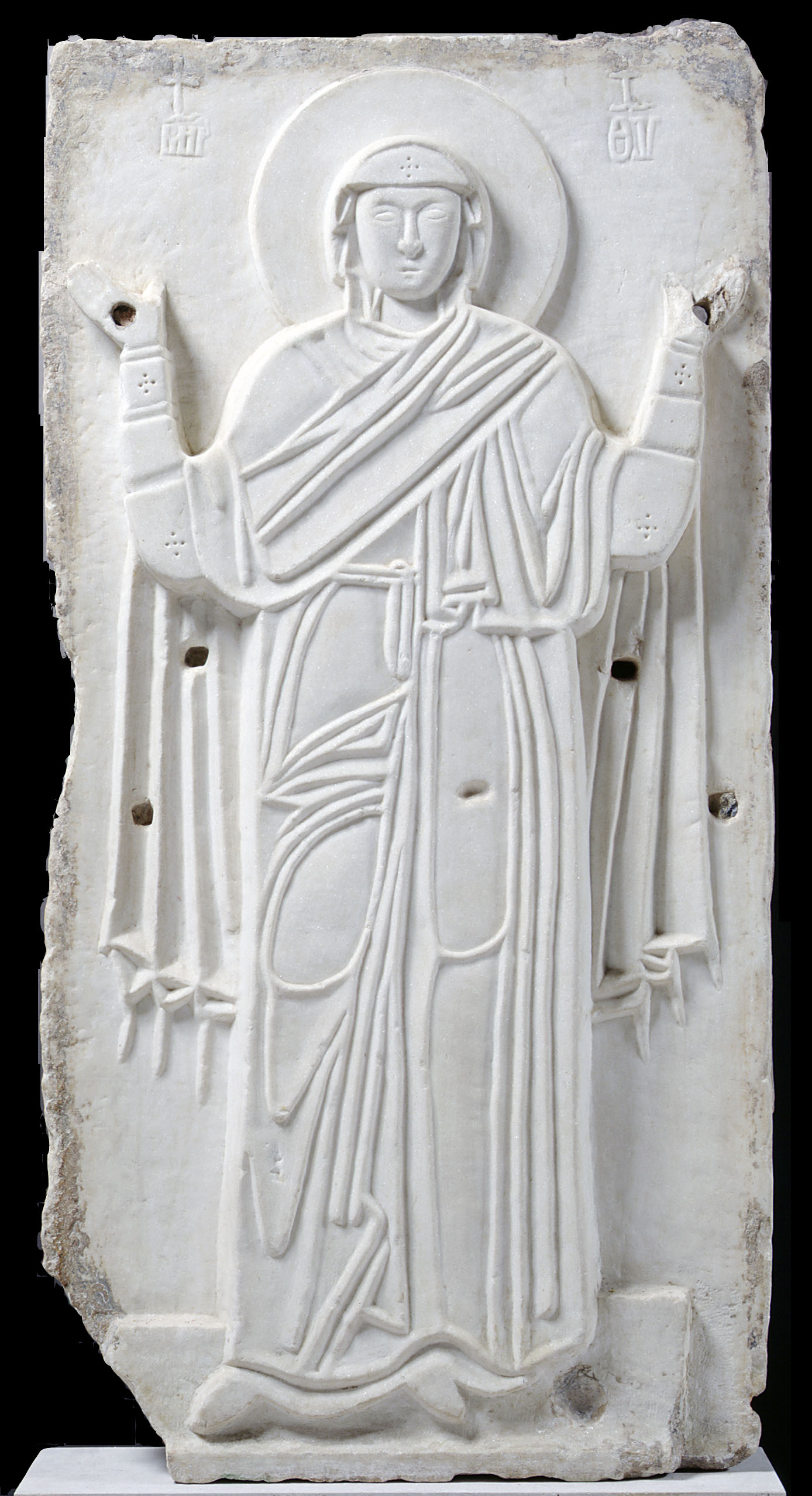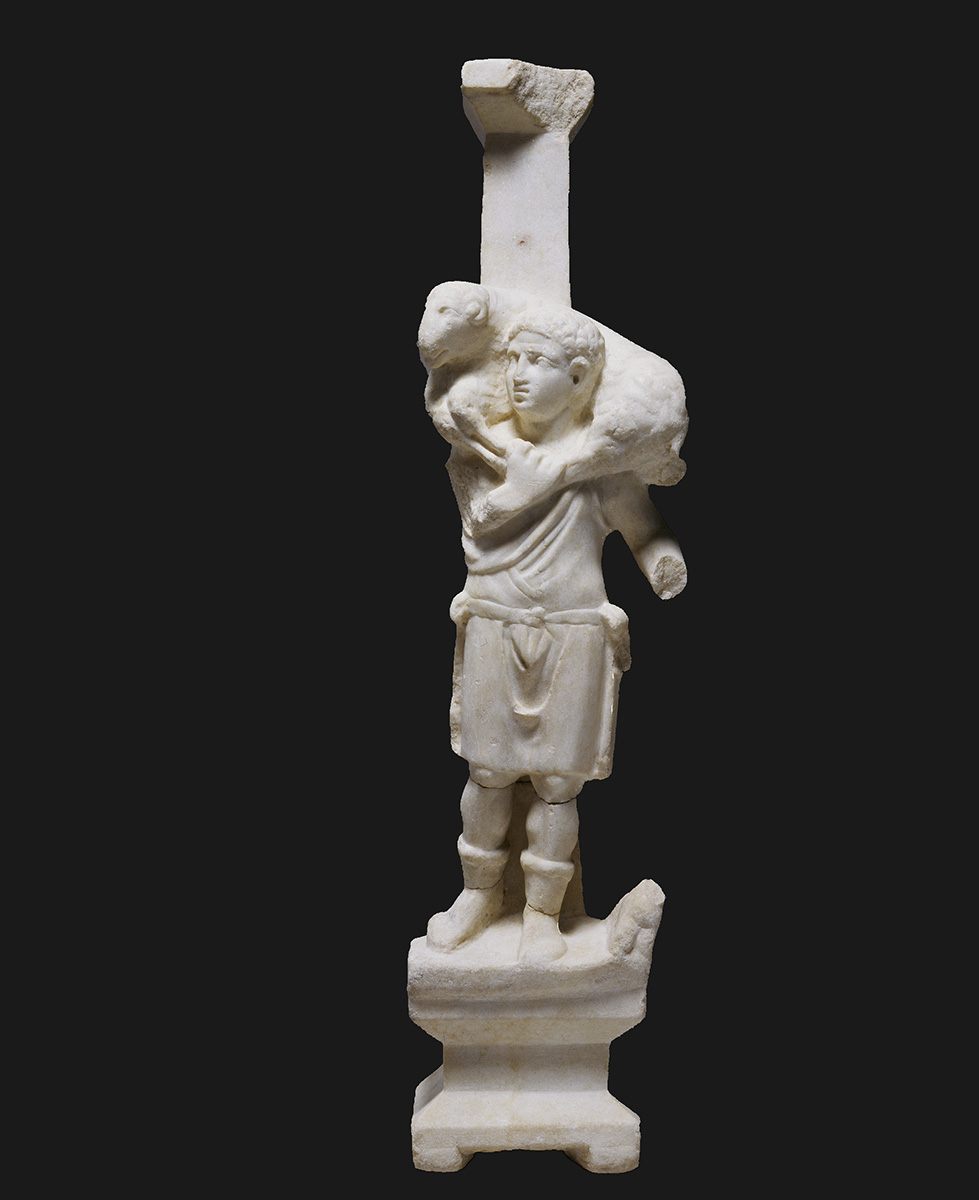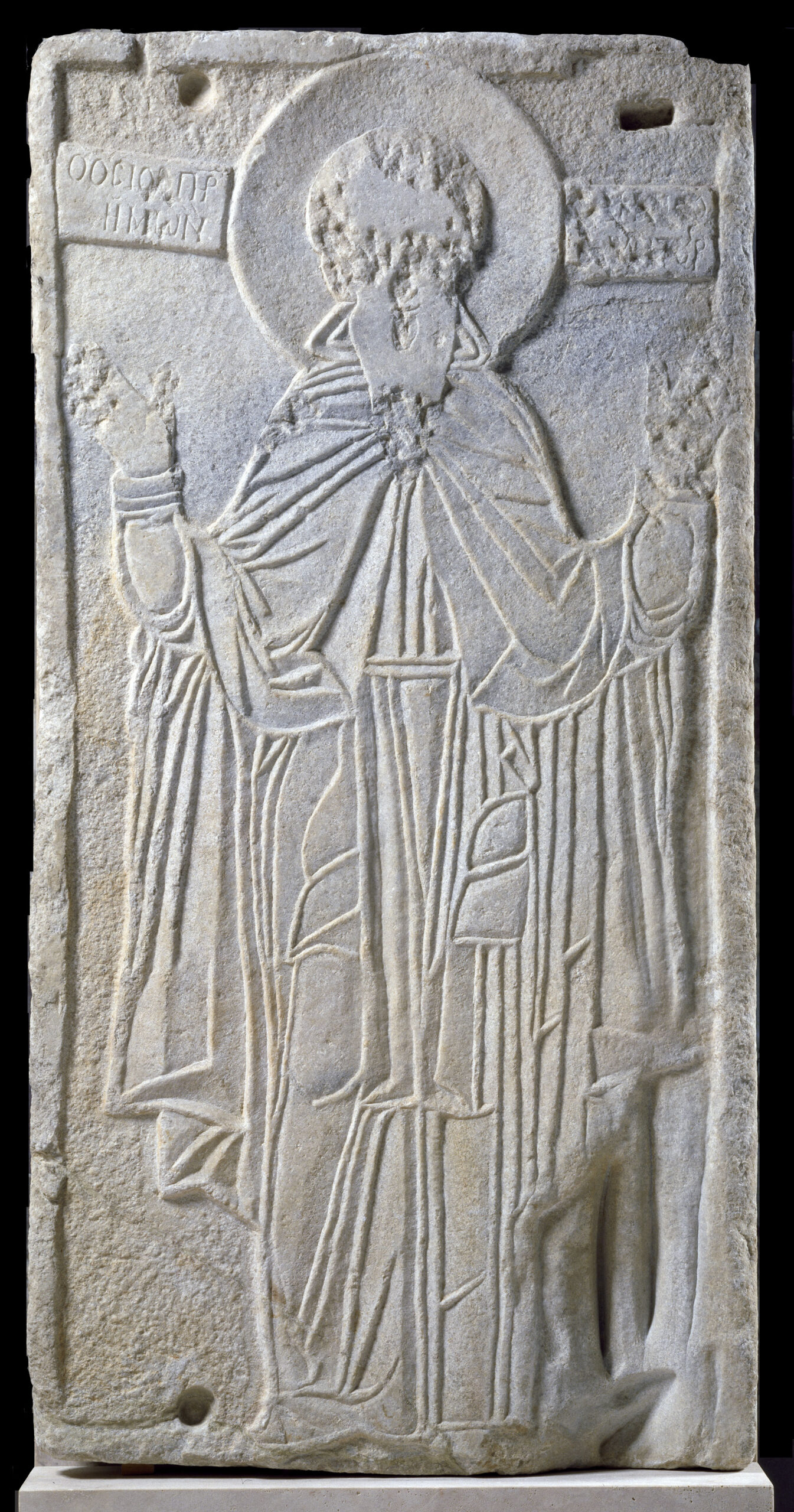Sculptures
The collection comprises ca. 2,000 objects, which are dated from the 2nd-3rd century A.D. to the 17th century A.D., 120 of which are part of the permanent exhibition of the Museum. Almost all of them were unearthed in Thessaloniki and its surroundings. In the earlier ones, like the table support Christ as Good Shepherd, is visible the vivid connection with Antiquity but also the gradual abandonment of the concept of statue in full plastic.
Early Christian period (4th-7th centuries) is represented with a large quantity of sculptures among which eminent position hold the groups from Saint Demetrios and Acheiropoietos (fig. 1-2). Most of them are architectural sculptures, like various types of capitals: ionic, Corinthian, theodosian; thorakion slabs which were decorating churches, public buildings and sumptuous houses. Ancient decorative motives like meander and egg-and-dart coexist with Christian symbols, like Christogram and vine tendril.
During Dark Ages (7th – mid 9th century), a period which was named so because of the minimum amount of information we possess about it, the artistic production is reduced both quantitatively and qualitatively. The few surviving sculptures are characterized by stylized and abstract relief.
In the middle Byzantine period (9th -12th centuries), a period of prosperity for Byzantium, artistic production recovers notably (fig. 3 ). The collection includes important works such as capitals, thorakion slabs and large marble icons with praying figures. Sculptures with mythological animals indicate the Byzantine interactions with the neighboring peoples of the East. Pseudo-sarcophagi, relief plaques from the graves of eminent Thessalonians who were buried within the churches of the city, are also preserved.
Few sculptures dating to the late Byzantine period (13th-15th c.) appear in the musem’s collection. The period is marked by the fall of Constantinople in 1204 to the Franks and its final conquest in 1453 by the Ottoman Turks. Among the few artworks are included marble icons, gravestones, door frames and architraves from churches.
During the Ottoman occupation (1430-1912), sculpture gradually disappears and is replaced by the woodwork, as wood is a cheaper and easier to work material. Sculptures from the collection are exhibited in galleries 1, 2, 3, 4, 5, 7, 11 of the permanent exhibition and in the courtyard of the educational programs of the Museum of Byzantine Culture.



